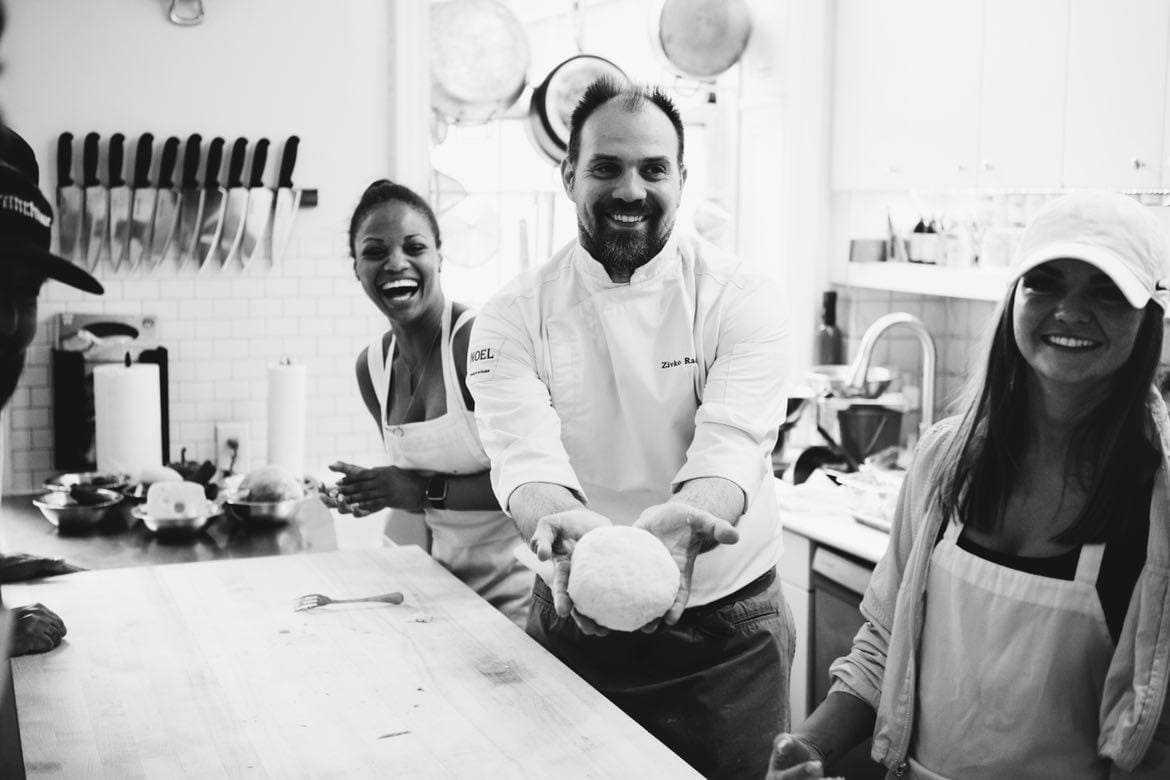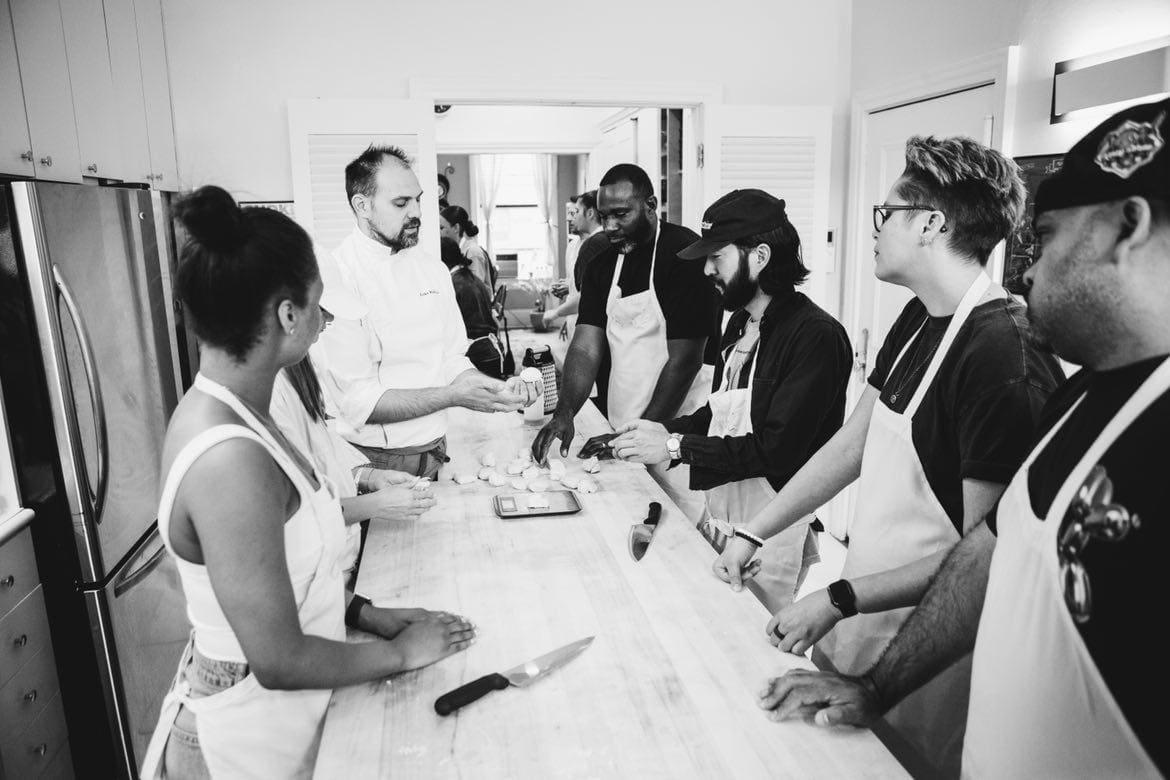Spanish cuisine is a tapestry of regions, climates, and centuries of culinary exchange. From olive-grove coasts to mountain villages, you’ll find shared building blocks – great olive oil, garlic, saffron – expressed in wildly different ways. In this guide, we’ll tour hallmark flavors and Spanish dishes, decode dining customs, and give you easy techniques to try at home. To finish, you’ll see how to experience Spanish cooking in NYC with Loza through hands-on classes, private chef tastings, and bespoke events that bring Iberian spirit to your table. It’s a practical, modern snapshot designed for curious home cooks and food-loving New Yorkers who want authentic results without intimidating steps.

What Is Spanish Cuisine?
Spanish cuisine isn’t one canon; it’s many local traditions. In Andalucía, Moorish legacies linger in almonds, citrus, and sherry vinegar. Valencia treasures rice culture; Galicia celebrates Atlantic seafood; the Basque Country is famed for pintxos and charcoal grilling; Catalonia layers sweet-savory notes (think sofregit and picada). Across the map, you’ll see techniques that repeat -slow braises, cooking a la plancha, and the flavor-building ritual of sofrito. Spanish food evolves constantly, absorbing global ideas while protecting regional DNA, so you’re never stuck choosing between “classic” and “creative” – you can comfortably explore both.
From Andalucía to the Basque Country: why “Spanish cuisine” is many cuisines
Travel twenty miles and the market basket changes – paprika-rich stews in Extremadura, cider-kissed sauces in Asturias, tuna confits in Cádiz. That diversity is the secret to Spain’s global appeal: familiar pantry, endlessly local results. For diners, it means no single “best way” to cook Spanish; for home cooks, it’s permission to adapt recipes to what’s fresh and nearby. Understanding this mosaic is the fastest route to confident, flexible Spanish cooking.
Core techniques you’ll see everywhere (sofrito, plancha, slow braises)
Sofrito (gently cooked aromatics) lays a sweet-savory base; plancha sears seafood and vegetables fast; low-and-slow cocidos and callos deliver comfort. Master these, and Spanish recipes become intuitive. You’ll also notice emulsions (allioli, salmorejo’s silky texture) and picada – nut-garlic-herb pastes folded in at the end for aroma. Techniques are simple, but timing and heat control make all the difference.
Signature Flavors & Pantry Essentials
Spanish cuisine tastes generous yet balanced because core ingredients pull double duty: they season and structure dishes. Beyond the classics, keep an eye on regional olive oils, local vinegars, and preserved seafood (boquerones, bonito del norte); these staples let you build restaurant-level depth at home without complex prep. Stock smartly and most “Spanish” flavor is just one spoonful away. Read more privete events.
Olive oil, garlic & saffron: the foundation
Extra-virgin olive oil anchors sautés and dressings; garlic perfumes marinades and tapas; saffron adds a floral backbone to rice and stews. Use more oil than you think for glossy, saturated flavors, and bloom saffron gently in warm liquid for even color. A little care here prevents bitterness and keeps dishes bright rather than heavy.
Smoked paprika (pimentón), sherry vinegar & almonds: depth and balance
Pimentón (dulce or picante) brings warmth and color; a splash of sherry vinegar brightens braises; almonds thicken sauces (romesco, ajoblanco), proving that texture is a flavor, too. Rotate dulce/picante based on the dish’s richness, and add vinegar right before serving to keep acidity lively. Toast nuts lightly to unlock their perfume before blending.
Fresh heroes: tomatoes, peppers, seafood, seasonal veg
Heirloom tomatoes become gazpacho and pan con tomate; peppers char on the plancha; mussels, squid, and clams star wherever coasts touch markets. Seasonal cooking isn’t a trend in Spain – it’s the baseline. When produce peaks, recipes get shorter, cooking gets faster, and the results taste naturally luxurious.
Iconic Spanish Dishes You Should Know
From tapas to rice dishes, “iconic” often means “simple but precise.” Respect ingredient quality and pan heat, and even weeknight cooks can deliver flavors that feel like vacation. Use these classics as a toolkit rather than a fixed script.
Tapas 101 (patatas bravas, croquetas, pan con tomate)
Tapas are more a style than a checklist: small, bold bites meant for sharing. Crisp-tender patatas bravas with smoky heat, creamy croquetas, toasted bread rubbed with tomato and olive oil – these Spanish tapas teach balance in miniature. Start with three or four, then layer in acidity (gildas), salinity (anchovies), and crunch (fried peppers) for a table that invites lingering. The point isn’t variety for its own sake – it’s rhythm and conversation.
Paella & rice classics (Valencian, seafood, socarrat explained)
Paella is a family of Spanish dishes, not a single recipe. Valencian paella layers rabbit, chicken, and beans; coastal versions lean into shellfish. What unites them is the socarrat – the toasty caramelized rice crust – earned by patience, not stirring. Choose a wide pan, let the broth reduce undisturbed, and resist the urge to “fix” the surface. That quiet at the finish is where magic happens.
Comforts & cold stars (tortilla española, gazpacho & salmorejo)
A thick, custardy potato tortilla is Spain’s queen of comfort. In summer, chilled soups rule: gazpacho is sip-able salad; salmorejo is richer, begging for jamón and egg. Both reward ripe produce and restraint – season boldly, chill thoroughly, and finish with great oil. Serve alongside a simple green salad and olives for a complete meal.
From the jamón board to churros: how to end on a high
Cured jamón, aged Manchego, membrillo, and olives lead naturally to chocolate-dipped churros – a playful finish after savory depth. If you prefer lighter endings, try citrus-forward olive-oil cakes or seasonal fruit with honey and nuts. Spanish desserts are about pleasure, not overwhelm; a small sweet bite closes the loop.
How Spain Eats: Dining Traditions & Etiquette
Spanish dining prioritizes connection. Courses can be fluid, plates are shared, and the clock bends to conversation. Embracing that mindset turns simple menus into memorable evenings – at home or out.
Tapas culture, sharing plates & the joy of sobremesa
Order a few, then a few more; let conversation set the pace. Spanish cuisine values sobremesa – the lingering after the last bite – where meals become memories. Clear the “must-finish” mentality and you’ll find space for one more taste, one more story. That ease is the secret sauce of Spanish hospitality.
When locals actually eat (late dinners, menú del día)
Lunch is the big meal; dinners start late. At midday, look for a menú del día: great value, seasonal, and unpretentious. Re-create the flow at home by making lunch the star on weekends and saving lighter tapas for evening. It’s easier on the budget and kinder to your schedule.
What to expect in a modern Spanish menu
Bistros mix traditional Spanish recipes with lighter plates: charred veggies, pristine seafood, and olive-oil-forward desserts. Expect flexibility for dietary needs and a playful approach to classics. If a dish looks minimal, trust the product; Spanish cooking hides skill in simplicity.
Spanish Drinks: What to Pair with Your Meal
Drinks extend flavor rather than compete with it. Think freshness with seafood, structure with meats, and bubbles or fortified wines to cut richness. Even low-ABV options can feel celebratory when served well-chilled.
Wines by region (Rioja, Ribera del Duero, Albariño)
Rioja and Ribera offer berry-spice reds; Albariño from Galicia sings with shellfish. Ask by region and style, not just grape. If you’re unsure, match intensity: lighter whites for tapas and veg, structured reds for braises. A short chat with your shop goes a long way.
Sherry & Cava: aperitif to dessert
Dry fino wakes up tapas; nutty amontillado loves mushrooms; PX is dessert in a glass. Cava, Spain’s sparkling, is your anytime celebratory pour. Keep one bottle cold and you can turn a Tuesday tortilla into a mini-fiesta.
Low- and no-ABV classics (tinto de verano, horchata)
For warm days, tinto de verano is breezy; Valencia’s tiger-nut horchata cools without alcohol. Consider a rosemary sprig or orange slice for aroma. Simple garnishes make casual drinks feel thoughtful.
Cook It at Home: Simple Techniques to Try Tonight
Cooking Spanish at home is about rhythm: begin with a strong base, respect heat, and finish with acid or herbs. Short ingredient lists mean each step matters a little more, but the payoff is big.
Sofrito step-by-step (building flavor for rice, stews, sauces)
Start with a generous slick of olive oil; slowly cook onion until sweet, add pepper and garlic, finish with grated tomato and a pinch of pimentón. This base turns pantry rice into paella-style pans and easy weekday Spanish recipes. Make extra and freeze in small portions—you’ll thank yourself on busy nights.
Plancha at home (high-heat seafood & veg, safely)
Use a heavy skillet, preheat until shimmering, cook dry-marinated shrimp or zucchini in batches, and finish with olive oil, lemon, and parsley. Don’t crowd the pan; steam kills char. A wire rack keeps results crisp while you finish the rest.
Smart swaps in the U.S. pantry (saffron, smoked paprika, bomba rice)
If bomba rice is scarce, choose a medium-grain with high absorption; buy saffron in small amounts; keep pimentón sealed and fresh. For jamón, try quality country ham shavings; for romesco, sub roasted almonds or walnuts. The goal is spirit, not strict reenactment.
Experience Spanish Cuisine in NYC with Loza
You don’t have to fly to Madrid to explore Spanish cooking – you can do it here in New York, hands-on, with Loza. Learn core techniques from a pro, host an elevated dinner at home, or stage a Spanish-themed team event that’s all flavor and zero stress.
Join a Spanish Cuisine Cooking Class
Book a group Spanish cooking class NYC with Loza’s award-winning private chef and learn fundamentals like sofrito, tortilla, and paella in a social, skills-first format. It’s interactive, ingredient-driven, and tailored to dietary needs. You’ll leave with repeatable recipes and the confidence to riff at home.
Book a Private Chef Spanish tasting menu for your home
Host an intimate night built around Spanish dishes – from tapas flights to seafood rice and churros – cooked on-site by Loza’s private chef team. Perfect for date nights, birthdays, and small gatherings. The service includes shopping, cooking, and cleanup, so you can focus on your guests.
Host a Spanish-themed private event/catering
Planning a team offsite or milestone celebration? Loza designs custom Spanish-themed menus and experiences for private events across NYC, so guests graze, sip, and linger like locals. From passed tapas to paella stations, the format flexes to your space and budget.
FAQ: Spanish Cuisine, Answered Fast
Is paella always with seafood?
No. Traditional Valencian paella features rabbit, chicken, and beans; seafood paellas are coastal adaptations. The constant is rice technique and socarrat. If you’re vegetarian, build depth with mushrooms, artichokes, and smoked paprika.
What’s the difference between tapas, pintxos & raciones?
Tapas are small plates sized for sampling; pintxos (Basque) are bite-sized pieces often skewered on bread; raciones are larger sharing portions. Order across formats to pace the table. Think “mix and match,” not fixed courses.
Can I make authentic paella without a paella pan?
Yes – use a wide, heavy skillet for maximum surface area, don’t over-stir, and let the bottom toast at the end to build socarrat. Finish with a rest under a clean towel to settle the rice. That last minute matters.




